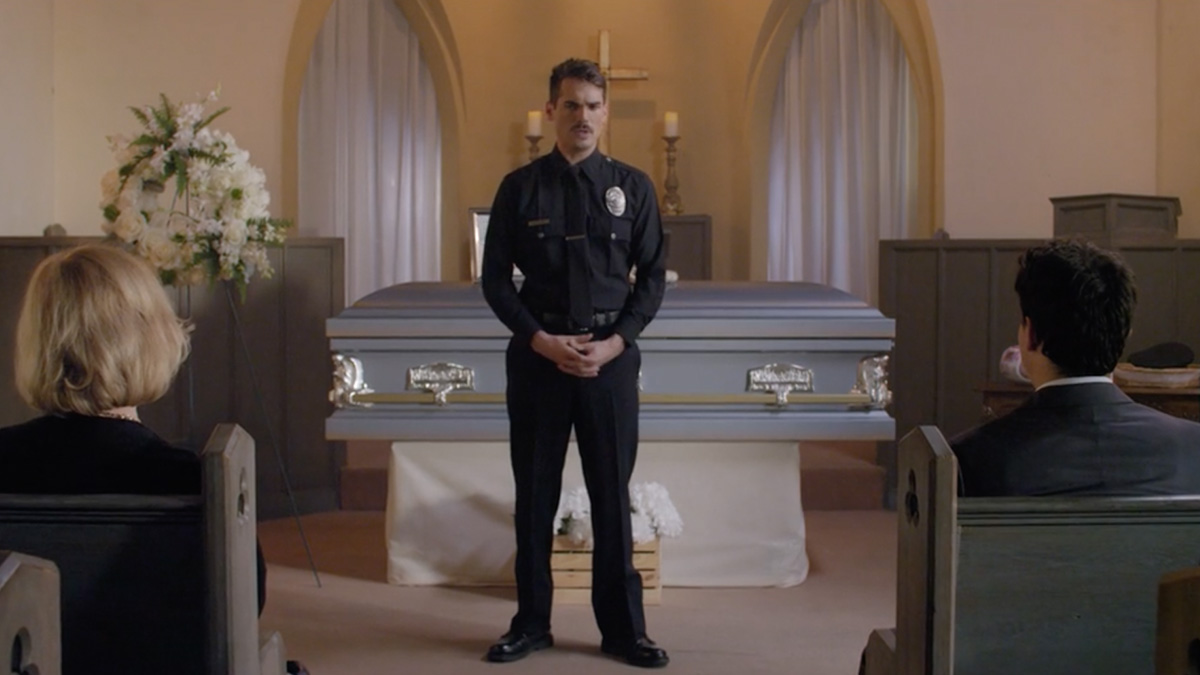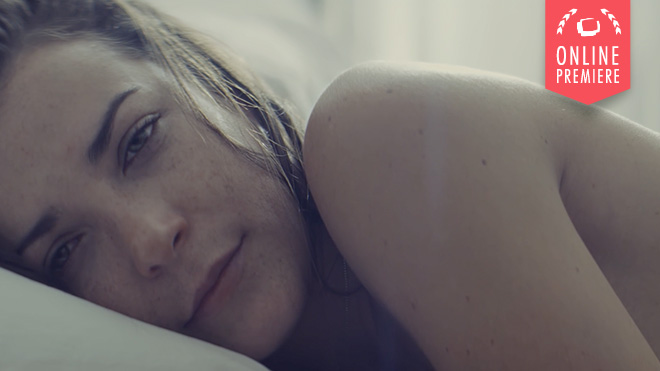A woman reflects on her past and wonders on her future – while she happens to be having an abortion.
This film really comes at a time that everything feels upside down in a country that is based on liberty. Directed by Emily Goss back in 2021, the writing was already all over the wall about suppression of abortion rights in several states. ‘A Little House in Aberdeen’ takes us on an unusual and particular perspective on the subject, shying away from the actual “event” and focusing on the character and everything else she is thinking about. The film holds many impressive elements, starting with the incredible strong dialogue, all reinforced within one single take. Slight camera motions come in to elevate and support the story at opportune moments which let’s the audience truly sink into the setting. We had the chance to catch up with Emily, which by the way also stars in the film. Read our full interview below:
I think we already know the inspirations behind this film, but what pushed above to get this in production?
This is my first film as a writer and director and, honestly, it was the encouragement of my friends that made me think I could do this. I’ve been an actor for 10 years, and have seen so many of my peers start writing and directing and create fantastic work. The pandemic really impressed upon me that I couldn’t wait for anything anymore. And the writing was on the wall for the future of abortion rights in this country. I wrote the script in April of 2021, and I was accepted into Film Independent’s Fiscal Sponsorship Program. That helped us secure funding. Then seeing people I knew and people I didn’t know stand up and support this film was incredibly moving. We shot for one day in July of 2021. “A Little House In Aberdeen” was finished in August 2021.
Tell us about her monologue, what went through the writer’s mind while putting themselves in this woman’s shoes?
A lot of people might think they can’t empathize with someone who has had an abortion or they can’t relate to that experience – I want to blow that up. I believe that the more specific a story is, the more universal it is. So the best way I knew to create an empathetic character was to give the very specific anecdotes of my life and the thoughts that run through my head to her. (My grandfather ran the concessions at a racetrack, my mom didn’t have an epidural when she gave birth to me because she got to the hospital too late because she was moving a huge glass table and everything started happening too quickly after that, and so on). I also knew that I was going to be playing the character, and it felt right to put myself into her. Because I could have been in this situation. The point of the film is that we all could be in this situation. The circumstances and beliefs that separate us are malleable and constructed. And of course many of us have been in this situation! Abortion is extremely common. 1 in 4 women will have an abortion in addition to the trans and nonbinary people who have them. But I don’t know how these numbers will be affected now that Roe has been overturned.
What was the most challenging element for you to film?
Figuring out how to get the movie, in one shot, in one day, in our space, with limited resources, was the biggest challenge. I had storyboarded the entire film sentence by sentence and gone over it with our awesome DP David Y. Chung on Zoom. David was out of town shooting so we didn’t get to rehearse (which was also a challenge). Our First AC Russell Thomas was shooting with David and came up with the DIY pulley situation. On set in the studio, we flung a rope over a pipe in the lighting grid above us, the camera was securely fastened to one end, and it was weighed down with a sandbag on the other, outside the walls of the procedure room set. The sandbag took some of the camera’s weight. We were shooting with an Alexa Mini which is pretty darn heavy. Again, lots of carabiners, since there were moments when the camera was dangling right above my face. Then our swing was became the pulley operator, and our gaffer and my co-producer became the camera operators, one on each side of the camera, guiding it around the room. Between the three of them, they were able to maneuver the camera for the 6-and-a-half minute take. Russ was pulling focus and David was operating the gimbal. It was a decently sized operation, as David says. I love long takes because they require a lot of teamwork. Pulling off this shot was definitely a team effort.
Do you have any tips or advice to offer fellow filmmakers?
I think we know more than we think we do. We have instincts, we have tastes. We can trust them.
What do you hope people will take away from ‘A Little House in Aberdeen’?
I hope this film demystifies abortion. An in-clinic abortion takes 5-10 minutes and is a safe and straightforward medical procedure. But this film now shows what millions of people have lost. Abortion is now illegal in 10 states, with 5 more to follow in less than a month, and more to follow after that. I hope this film now shows how f*cked up the Supreme Court’s decision was. Counter to what we usually see in film and TV, the drama in “A Little House In Aberdeen” does not come from the abortion. This abortion, like some abortions, is not a big deal. It is not the main event in this woman’s life. It is what will allow her to figure out who she wants to be and what she wants to do. I hope audiences will understand that everyone deserves to access abortion care and determine their own lives.
What are your favorite films?
Parasite, Moulin Rouge, One Flew Over The Cuckoo’s Nest, Tommy Boy…
What are your favorite short films?
I’m a big fan of Vanishing Angle’s single take shorts like The Robbery, It’s All Right, It’s Ok, and Thunder Road. The Climb is amazing. I just screened at Dances With Films where I saw incredible shorts like Black Dragon directed by Alexander Thompson, My Life Stopped at 15 directed by Nikki Mejia, A Dire Strait written/directed by Liang-Chun Lin, and so many more.




